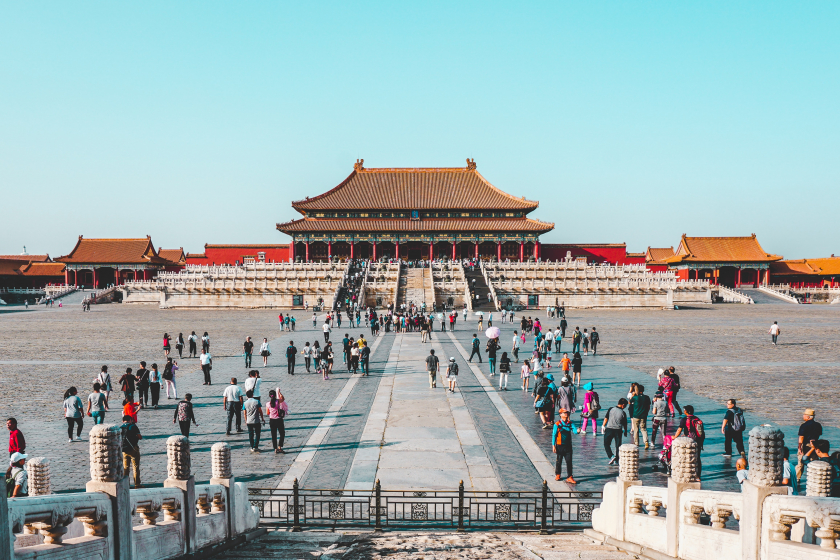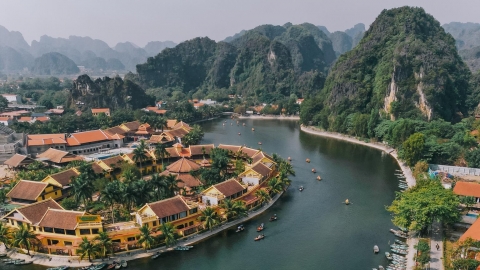Asian tourism has started to recover in 2022, with more and more countries opening their borders. And now that China has opened up, its people are getting ready for group tours abroad from February 6.
The news delivered what the global travel industry has been waiting for for nearly three years: the return of the world's largest outbound tourism market.
200 million Chinese tourists going abroad by 2028
From February 6, Chinese group tours will begin to travel to 20 destinations. Eleven of these destinations – Thailand, Indonesia, Cambodia, Maldives, Sri Lanka, Philippines, Malaysia, Singapore, Laos, New Zealand and Fiji – are in the Asia-Pacific. Although the trend of Chinese tourists traveling individually had begun to emerge before the pandemic, the early recovery of large group tours will also affect the short-term strategies of Chinese airlines.

China has opened up, and its people are getting ready for group tours abroad starting February 6.
The recovery of Chinese outbound tourism is expected to be strong. Analysts predict that Chinese outbound tourism will accelerate in the second half of 2023. The China Outbound Tourism Research Institute (COTRI) said that in 2025, the number of Chinese outbound trips will reach 179 million, exceeding the level of 2019.
By 2028, China will have made 200 million outbound trips. This is a very fast pace, just 14 years after the country recorded 100 million outbound trips in 2014 and, remarkably, includes three years of lockdown.
Reviving regional tourism demand
So what does China's reopening mean for Asia Pacific's tourism economies?
Firstly, it will stimulate important travel demand for the entire travel and tourism industry in Asia Pacific after the recent difficult period.
A quick look around the region shows that in 2019, China was the number one tourist market for Australia, Japan and South Korea. In Southeast Asia, it was the top tourist market for Cambodia, Singapore, Thailand and Vietnam, and second for five other countries. Chinese tourists were also the second largest source of visitors for the New Zealand market.
While Asia Pacific tourism is expected to gradually recover in 2022, the results are mixed, with many destinations across the region reporting less-than-stellar arrivals in 2022.
In addition, with the global economic recession forecast to be severe in the second quarter of this year, the Asian tourism industry is in dire need of a boost to recover strongly. According to the World Tourism Organization (UNWTO), more than 900 million international tourists will travel in 2022, representing 63% of 2019 levels. However, Asia Pacific will only recover 23% of 2019 levels, much lower than 79% in Europe and 65% in the Americas.
Increased competition between destinations
2023 is also the first year since 2019 that Asia Pacific is expected to have a strong tourism year with all countries opening up. Destinations will promote heavily to attract tourists from all over the world, not just China.

Thailand to welcome 11.2 million tourists by 2022
An interesting competition could be on the horizon between Thailand and Japan as both aim to become the region’s top tourist destination by 2023. Both countries stand to benefit from China’s reopening, especially as Japan has lifted its current entry restrictions on Chinese visitors.
Japan and Thailand also welcomed record numbers of visitors in 2019: 31.9 million to Japan and 39.9 million to Thailand. While they won’t be able to match that in 2023, both countries are forecast to see impressive growth. Thailand, which welcomed 11.2 million visitors in 2022, could see double that number. And Japan, which reopened in October 2022, could also see more than 20 million visitors this year.
New challenges will arise
However, the recovery of tourism across Asia Pacific is likely to be challenging. The industry remains understaffed and under-resourced, and it remains unclear how airports, transport hubs and destinations in the region will cope with the surge in visitors.
In addition, questions about climate change and sustainable economic development are also being raised in tourism. Questions about the quality and quantity of visitors will re-emerge in some destinations, especially where tourism has a large impact on the environment and communities.
For Asia Pacific, a new era of travel and tourism is beginning now. New tourism models are emerging and industry forecasts are being revised regularly.



































